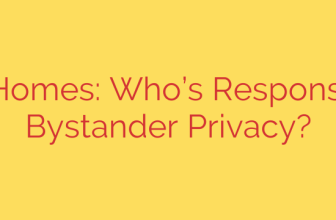
What Are Passkeys? The Future of Your Online Security Has Arrived
For years, we’ve been told that the secret to online security is a long, complex, and unique password for every account. While well-intentioned, this advice has led to password fatigue, forgotten credentials, and the risky habit of reusing the same weak passwords everywhere. Fortunately, a new era of digital security is here, and it’s called the passkey.
Passkeys are a revolutionary replacement for traditional passwords, designed to be both more secure and significantly easier to use. Think of a passkey not as something you remember, but as a digital key that lives securely on your device—like your phone, computer, or tablet.
At its core, a passkey uses a powerful cryptographic method known as a key pair. When you create a passkey for a website or app, two connected keys are generated:
- A private key, which is stored securely and exclusively on your personal device. It never leaves your control.
- A public key, which is sent to the website’s server. This key can verify your identity but cannot be used to log in on its own.
When you sign in, you simply use your device’s built-in authentication method—like your fingerprint, face scan, or device PIN—to approve the login. Your device then uses the private key to sign a unique challenge from the server, proving it’s you without ever transmitting a secret you have to remember.
How Passkeys Eliminate Today’s Biggest Security Threats
The real power of passkeys lies in their ability to neutralize the most common ways accounts get compromised. They are fundamentally designed to solve the inherent weaknesses of passwords.
Making Phishing Attacks Obsolete
Phishing is one of the most successful forms of cyberattack. Scammers create convincing fake websites to trick you into entering your username and password. With a traditional password, you can easily be fooled.
A passkey, however, is cryptographically bound to the specific website or app it was created for. If you land on a fraudulent website, your browser or operating system will recognize that it doesn’t match the authentic site, and your passkey simply won’t work. It becomes impossible to accidentally give your “password” to a scammer because there is no password to give.
Ending the Danger of Data Breaches
We constantly hear about massive data breaches where hackers steal millions of user passwords from a company’s servers. If you reuse that password elsewhere, all of those accounts are now at risk.
With passkeys, this threat is massively reduced. The server only stores your public key, which is useless to a hacker without your device’s corresponding private key. Even if a company suffers a complete data breach, there are no passwords to steal. Your account remains secure because the secret needed to access it—the private key—is still safe on your device.
The End of Weak and Reused Passwords
The single biggest weakness in personal cybersecurity is human nature. We choose simple, memorable passwords or reuse the same ones across dozens of sites for convenience. Passkeys remove this vulnerability entirely.
Every passkey is, by default, incredibly strong and unique. You don’t have to invent or remember a complex string of characters. The underlying cryptography is automatically robust, giving you maximum security without any extra effort.
Security That’s Finally Convenient
The best security is the kind you’ll actually use, and passkeys are designed to be almost effortless. Instead of typing a password, you’ll use the same quick, familiar actions you use to unlock your device every day:
- Face ID or Touch ID on Apple devices
- Fingerprint Unlock or Face Recognition on Android and Windows devices
- A simple device PIN
Furthermore, major tech ecosystems like Apple, Google, and Microsoft are working together to make passkeys seamless. Passkeys can sync securely across all your devices using your cloud account (like iCloud Keychain or Google Password Manager). This means you can create a passkey on your phone and then use it to log in on your laptop without any complicated setup.
How to Get Started with Passkeys
Adoption is growing rapidly, and many of the services you already use likely support passkeys. Here are some actionable steps you can take today:
- Check Your Major Accounts: Log into your Google, Apple, Microsoft, PayPal, or eBay accounts and look in the security settings. You will likely find an option to “Create a passkey.” The process usually takes just a few seconds.
- Use Your Device’s Built-in Manager: Ensure your device’s password manager (like iCloud Keychain or Google Password Manager) is enabled to securely store and sync your passkeys.
- Choose the Passkey Option: The next time you sign up for a new service, look for the “Sign in with a passkey” option. As more websites and apps adopt this standard, it will become the default way to log in.
The transition to a passwordless future won’t happen overnight, but it is happening now. By embracing passkeys, you’re not just adopting a new technology—you’re taking a massive step forward in securing your digital life against the threats of today and tomorrow.
Source: https://www.bleepingcomputer.com/news/security/how-secure-are-passkeys-really-heres-what-you-need-to-know/








